Developing district heating schemes creates a roadmap for how best to combine different types of heat in residential settlements and allows to make informed decisions on energy efficiency improvements, ensure energy independence, and reduce contributions to climate change.
Roundtable participants discussed this and district heating schemes’ other benefits as part of “Heat Supply Scheme Development Under the New Methodology: An Important Step Toward the Energy Efficient Transformation of Ukrainian Settlements.” The roundtable was organized by the USAID Energy Security Project (ESP) on April 28 with the support of USAID and the Ministry of Communities and Territories Development (MinRegion).
USAID ESP is providing technical support to implement the new methodology, which was developed with the support of the USAID Municipal Energy Reform Project and approved by MinRegion in Fall 2020. “We are pleased to observe in this the consistency of USAID’s programs and the effectiveness of our assistance,” said Andrii Nesterenko, USAID Senior Energy and Municipal Finance Specialist.
This new methodology is an important step forward in planning Ukraine’s heat supply systems and introduces the concept of efficient district heating. Most cities’ district heating systems are in poor technical condition and need rehabilitation or upgrading, which means there is a real opportunity to integrate waste heat sources into the communal systems and optimize fuel balances in residential settlements. Unlike previous approaches to district heating, the new methodology pays considerable attention to energy efficiency and renewable energy sources.
There are other progressive innovations in the methodology too: a way develop alternative scenarios for a multi-year period, cost-benefit analysis, an emissions benchmark, etc. Furthermore, Mr. Nesterenko is convinced that “this approach is fully consistent with the new vision of international financial institutions regarding the financing of municipal projects.”
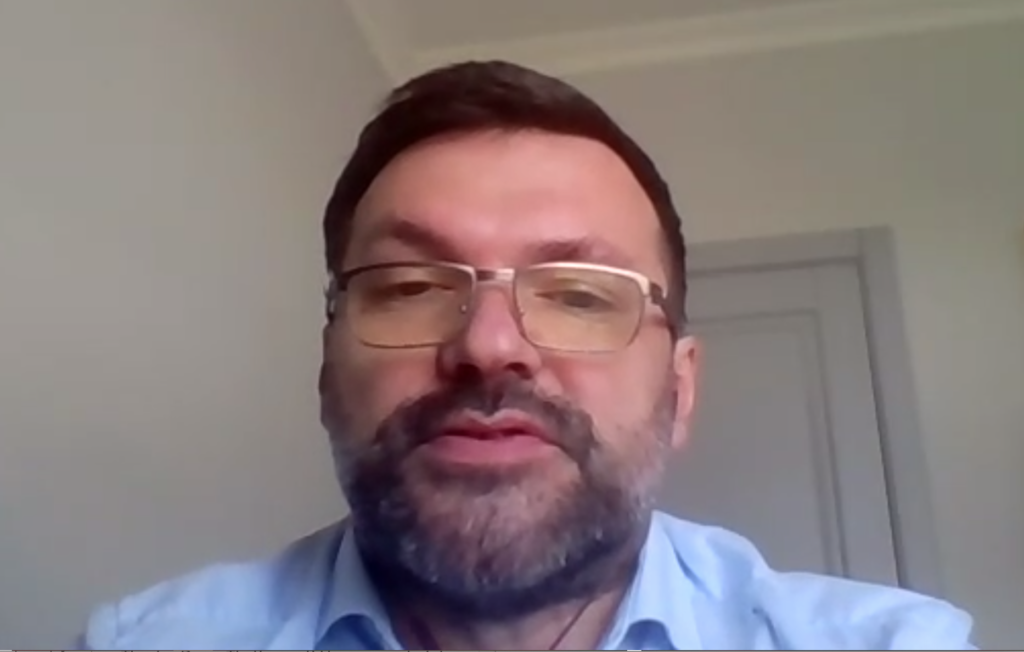
Sergii Gorbachov, USAID ESP Deputy Chief of Party, thanked MinRegion for its cooperation and for the opportunity to discuss urgent issues with all stakeholders. USAID ESP plans to provide practical support to partner cities in developing and implementing heat supply schemes using the new methodology.
USAID ESP is currently working in three directions:
- Creating a practical guide to developing heat supply schemes to assist cities, district heating companies, and developers with tailored advice and recommendations.
- Supporting connections to heat infrastructure in the law. In March, the Verkhovna Rada registered a draft law setting out the principles of connecting buildings to heat supply infrastructure. The law contained a number of proposals drafted by USAID ESP; once the law is adopted, USAID ESP will support its implementation by developing secondary legislation.
- Analyzing international legal practices treating heat supply schemes as an integral part of urban planning documentation.
“USAID ESP emphasizes the development of heat supply schemes and the schemes themselves, as they are an important tool of achieving coherence of technical, economic and financial planning, climate impact aspects, and the introduction of district heating systems in residential settlements, which is important in terms of social impact at least for a ten-year period,” noted Mr. Gorbachov.
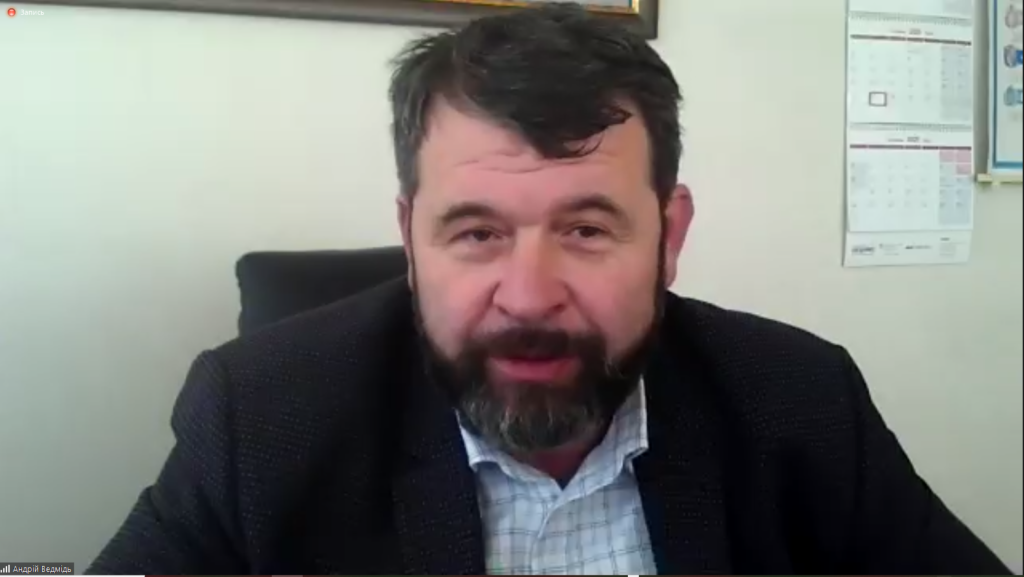
Andriy Vedmid, MinRegion’s Director of the Department of Communal Services and Communal Servicing, stressed that heat supply schemes are an innovation for Ukraine but are already used in other countries. The new methodology allows municipalities to approach heat supply modernization comprehensively, in contrast to the fragmentary, equipment-specific modernizations of the past. He also observed that the new principles will create a clear roadmap to modernize cities, reduce the cost of heating system maintenance, and decrease the tariff burden on consumers.
However, MinRegion has not yet received any proposed schemes under the new methodology, as cities have not been able to adjust their drafts quickly. Mr. Vedmid pointed out that cities need to be very careful in developing heat supply schemes, because MinRegion cannot propose revisions at the approval phase, but can only either approve or reject the proposed scheme. The roundtable gave experts a chance to learn more about how to develop new heat supply schemes, which they can use for the next round of tenders. Mr. Vedmid also welcomed USAID ESP’s initiative to develop a step-by-step manual for the methodology, as the procedure is also new to MinRegion.
In general, the purpose of heat supply scheme development is to optimize municipal district heating systems and city development prospects. It must also balance the need to provide heat energy to existing buildings and new construction, the need (and opportunities) to modernize heat generation sources and heat networks, and the use of renewable fuels and alternative energy sources. This balancing act is required for all cities of more than 20,000 people.
Current heat networks face a high share of accidents and heat energy loss, which significantly damages the quality of service and causes tariffs to increase. Only 34 percent of residential settlements in Ukraine have developed their heat supply schemes, which are necessary to calculate the investment component of the tariff. Without such a justification, the amount included for investment in the tariff can be disputed.
In response to participant questions, Mr. Vedmid asserted that district heating should be restored rehabilitated as much as possible and that it is necessary to conduct energy audits and study system load in order to properly develop heat supply schemes.
Ievgen Glushak, USAID ESP Heat Market Officer, focused on the innovations introduced by the new methodology:
- It shows users the current condition of the system.
- It allows users to see what the municipal heating system will be like in the future.
- It shows what measures need to be implemented and how much they will cost.
External investors also need to know what benefit they will receive for investing in the development of the municipal district heating system.
Other key innovations include decarbonization of the heat supply (gradual replacement of natural gas with alternative energy sources), indicators for the current system’s condition, formulation of benchmarks, district heating system zoning, forecasting of impact factors, cost-benefit analysis, technical and economic models, and requirements for project financing. In addition, the methodology is adapted to the EU Energy System Integration Strategy.
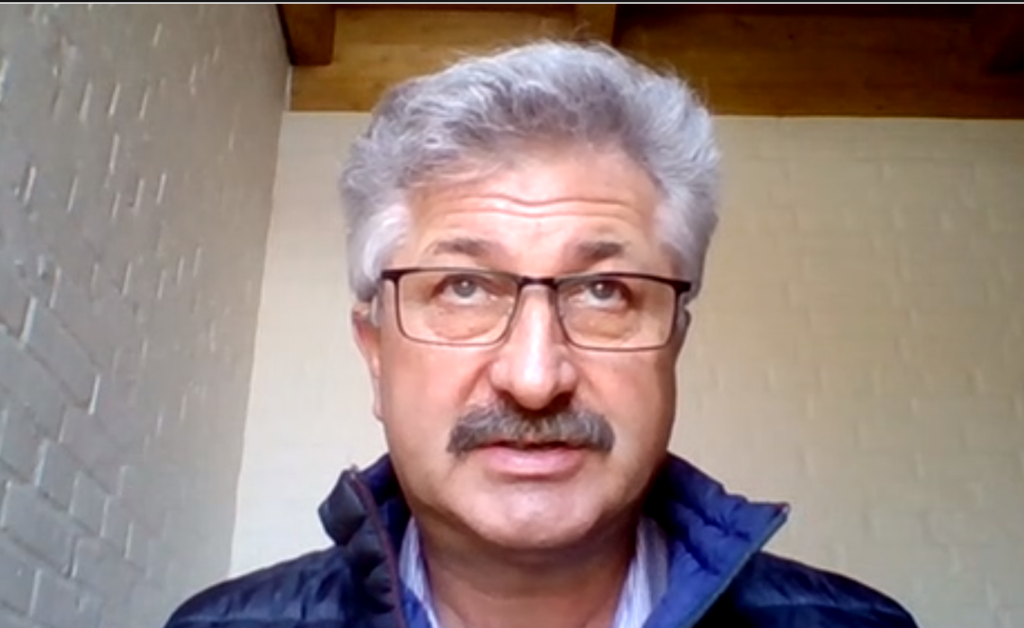
According to Mr. Glushak, the new methodology makes it possible to bring the heat supply scheme as close as possible to consumer expectations. Its purpose is to achieve an efficient municipal heating system in accordance with European standards, which means 50 percent of heat energy produced from renewable energy sources or 75 percent produced via cogeneration. The methodology also features an integrated approach, including thermal modernization of buildings, which will reduce fuel consumption and increase energy independence.
The roundtable became an opportunity to discuss a variety of technologies that could significantly improve district heating systems’ quality.
According to Ievgen Nikitin, Lead Researcher of the Gas Institute within the National Academy of Sciences and USAID ESP consultant, cogeneration is the most optimal way to build an efficient district heating system in Ukraine, as around 30 percent of the country’s heat energy is produced at thermal or nuclear power plants and combined heat and power plants (CHPs). With that foundation, the district heating system of the future is not only a way to ensure uninterrupted and efficient heat supply, but also an instrument for balancing supply and demand in the electricity market and for recovering discharged heat flow. Ukraine can also adapt the experiences of European countries, especially implementing electric boilers, heat pumps, and small-scale distributed cogeneration (CHP).
In the opinion of Vadym Lytvyn, Head of the Association of Energy Auditors of Ukraine, the main goal of modernizing buildings and heat networks is to ensure a comfortable microclimate in the consumers’ premises at an affordable cost, regardless of external conditions; enhance national energy security by cutting energy imports; and reduce the emission of harmful greenhouse gases.
Mykola Stepanov, Chief Engineer of Innovatsiine Budivnytstvo, elaborated on international and Ukrainian examples of flexible cogeneration, condensing boilers, and ORC-turbines. Roundtable participants learned about technical and technological parameters and the benefits of using certain technologies to plan the modernization of municipal heat supply systems.
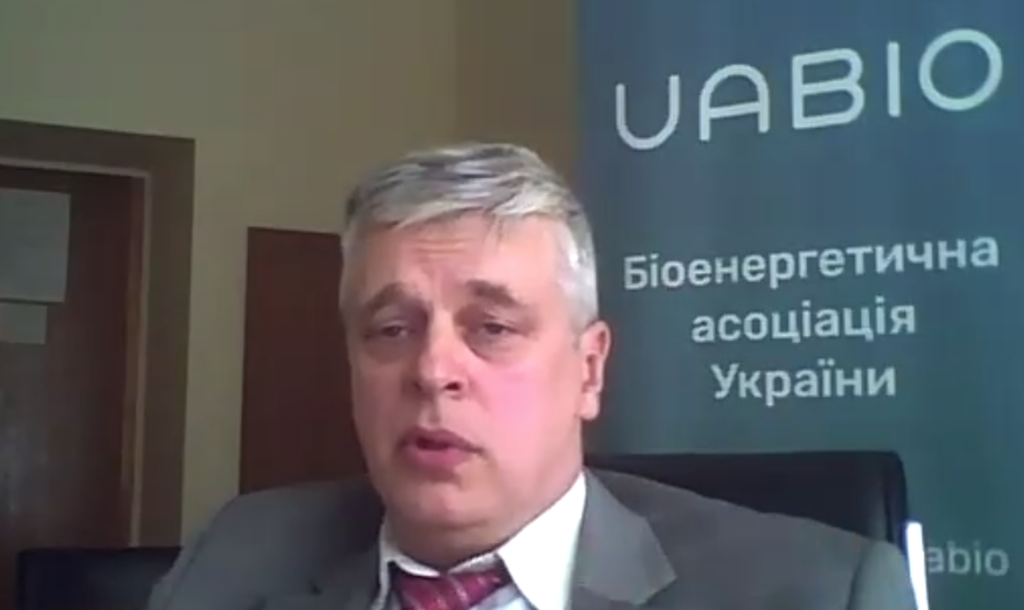
Georgii Geletukha, Head of the Board of the Bioenergy Association of Ukraine, emphasized the importance of system maintenance measures and the transition to cheaper types of fuel, primarily to more efficient heat energy generation (CHPs, cogeneration plants, heat pumps, the use of utilizers or condensing economizers). He felt that it is important to develop and maintain the district heating system at the state level and guarantee independent heat producers a simplified connection to district heating networks, because they can ensure the technical conditions for heat transfer in the system and offer cheaper heat. According to Mr. Geletukha, a district heating system should generate heat more cheaply than an individual gas-fired heat supply system. He noted that a significant amount of heat energy in European countries is generated from biomass, which is much cheaper than natural gas or electricity. Oleksandr Sigal, an expert from the National Academy of Sciences’ division for thermophysical processes in boilers, pointed out that biofuel may be necessary to more efficiently balance renewable energy sources (RES).
Sergii Dubovskoi, the Academy’s Lead Researcher at the Institute of Technical Thermophysics, commented that fast RES penetration creates a need to balance the power system in winter and to curtail other energy sources in summer. Therefore, despite RES’ positive benefits, there are serious challenges to balancing Ukraine’s integrated power system. Building energy storage systems and highly flexible generation is one way to resolve this problem by increasing the flexibility of the power system as it receives huge volumes from hard-to-forecast wind and solar power plants. It is equally important to ensure the modernization and flexibility of thermal power plants. Therefore, new schemes should consider how the district heating system can increase power system flexibility by providing paid services in the balancing power market and the ancillary service market.
Sergii Dunailo, Vice President of Ukrteplokomunenergo, thinks the new methodology stands a chance of stabilizing the district heating situation. Local authorities will be responsible for the lack of a district heating scheme (or an unenforced scheme), which may contribute to shaping a system policy for the development of a district heating system in Ukraine.
Andrii Chumak, Director of the Ternopilmiskteplokomunenergo utility, shared Ternopil’s experience developing and implementing a heat supply scheme. Ternopil faced old heat supply systems (constructed in the 1970s and 1980s) that could not meet modern demands, systems reliant on expensive natural gas, high heat losses, excessive fuel and energy consumption, and low service quality. The city needed to provide reliable heat supply for heating needs and hot water supply, spend resources efficiently, and adapt the old technologies to fit the needs of modern technical development. Ternopil decided to transition from a production model of district heating management to a customer-oriented model. Not only can customers manage their own services, but district heating enterprises can also improve performance efficiency and balance supply and demand, which reduces costs. International technical assistance was a key factor in financing this transition.
In contrast, Chief Engineer Mykhailo Kobylyanskiy of the municipal enterprise Ivano-Frankivskteplokomunenergo described Ivano-Frankivsk’s experience upgrading parts of its municipal heat system. That city needed to shift a significant number of apartment buildings away from inefficient boiler houses to local (apartment-level) gas heating. Ivano-Frankivsk determined that the city would need to reconstruct the heating system for buildings owned by the city or to construct new, independent boiler houses where reconstruction was not feasible.
As the event drew to a close, Mr. Vedmid added that MinRegion seeks out and informs cities of financial opportunities to support them in developing heat supply schemes, such as resources from international financial organizations.
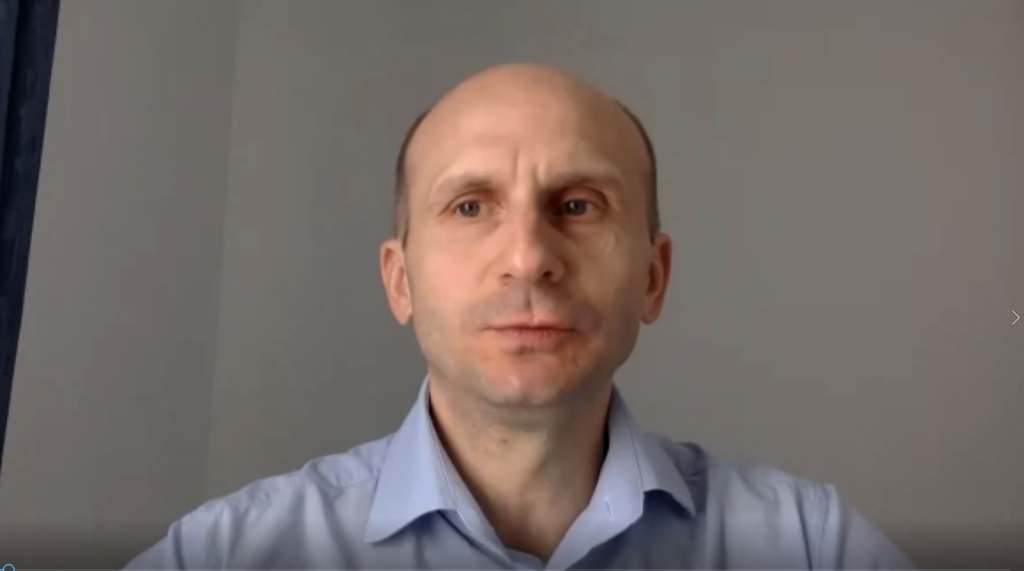
Wrapping up the roundtable, USAID ESP expert and moderator Sergii Pinchuk concluded that Ukraine needs to move toward energy efficient district heating, and that cogeneration, as one of the most optimal ways to improve district heating’s efficiency, should play an important role in the process. This is only the beginning of methodology implementation and improvement: the next steps may address not only heat supply but heat consumption, community appraisal of energy resource consumption, and a transition to full-fledged energy planning.
